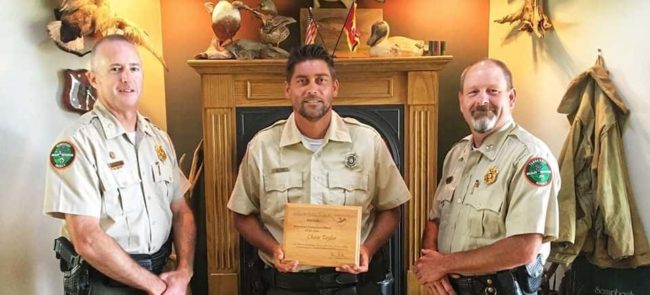
Dyer County, Tenn.–Tennessee Wildlife Resources Agency Wildlife Officer Chase Taylor has received the honor of being named Mississippi Flyway Waterfowl Enforcement Officer of the Year. The Mississippi Flyway Council annually recognizes full-time law enforcement officers who make outstanding contributions to the protection of waterfowl.
Taylor’s assigned work area is primarily in Dyer County which is one of the top waterfowl hunting destinations in Tennessee. It contains six wildlife management areas, including Reelfoot Lake. His work area also includes a state wildlife refuge and 25 miles of border along the Mississippi River. The Forked Dear and Obion rivers also flow through his work area providing additional waterfowl hunting opportunities.
Very active in his community, Taylor works with youth, school and adult organizations on waterfowl education and participation. In addition, during the past year he assisted in a waterfowl telemetry study to better determine travel patterns of ducks in West Tennessee and how they correlate with weather and water levels. He helped with baiting ducks on wildlife management areas and placement of transmitters so researchers could track their movements.
Taylor is a 15-year veteran of the TWRA. He began his career as an intern at Humboldt Hatchery and then worked as a wildlife technician for five years before beginning his wildlife officer career in 2010. He earned his bachelor’s degree in natural resources management from the University of Tennessee at Martin.
In addition to Tennessee, the Mississippi Flyway includes Alabama, Arkansas, Indiana, Illinois, Iowa, Kentucky, Louisiana, Michigan, Minnesota, Mississippi, Missouri, Ohio, and Wisconsin; and the Canadian provinces of Saskatchewan, Manitoba, and Ontario.
It is estimated about 40 percent of North America’s waterfowl spend at least part of their lives in the Mississippi Flyway. The flyway extends from Canada’s tundra to the southern end of South America.










